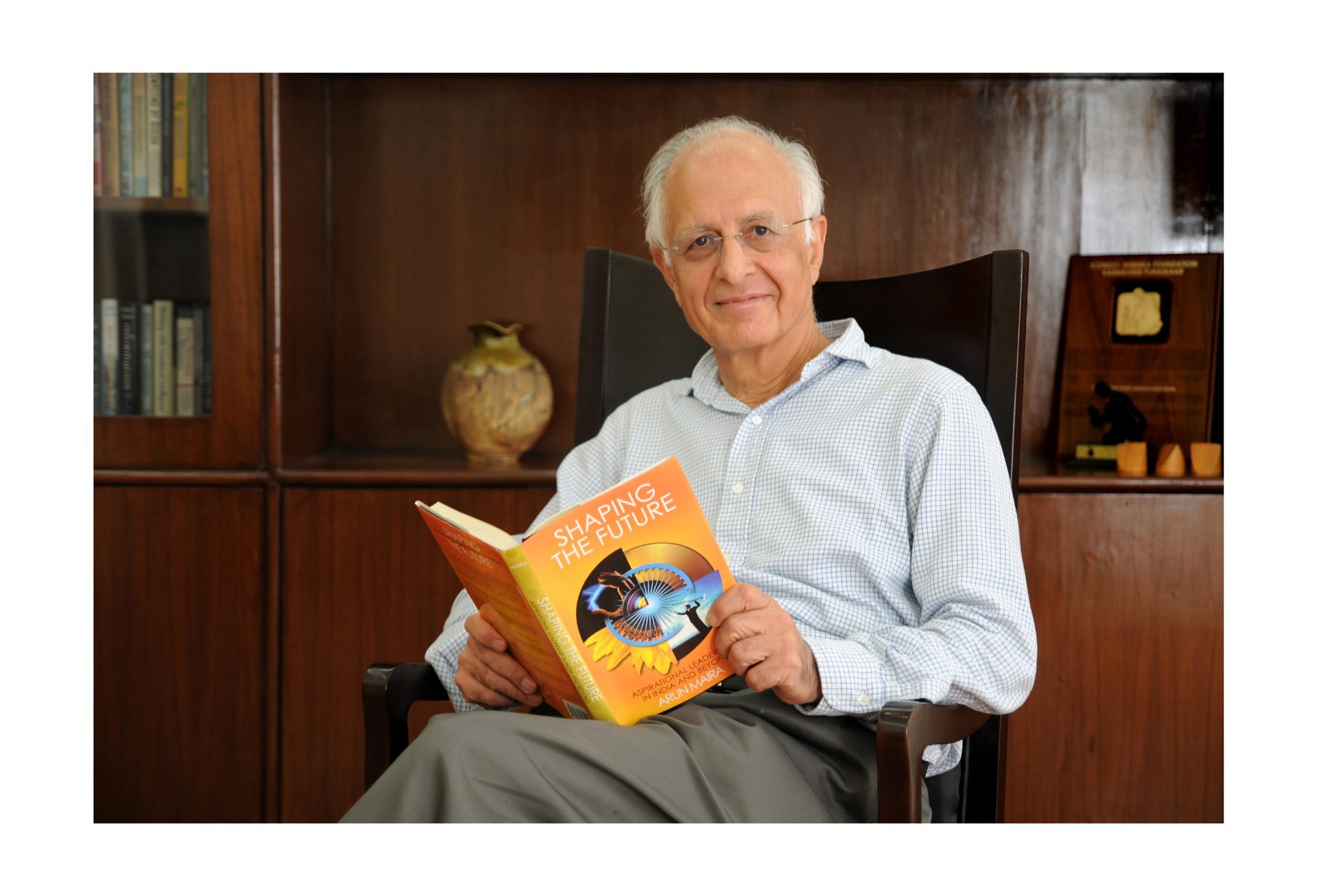When we talk of civil society, we usually think of civil society organisations. And as an organisation, you have to have a form, a leader, and a certain size. You have to talk about how much money you are able to raise, and how much you spend. It is how we see entities in the market and the government; and we use the same lenses that they use to look at ourselves and define ourselves in civil society.
But civil society isn’t restricted to organisations. There are many ways in which human beings take action to create change. A man on the street who gathers a few people to have a meeting on an issue is also civil society. In most cases though, to be more effective you need more resources and more cooperation, and so you create organisations.
But what is an organisation, and what does it do?
I used to be a consultant and one of the companies I advised 20 years ago said that they had a strategy but weren’t able to get the results of the strategy. The question posed to me was, “How do we organise ourselves to get the results we desire?”
So, I got their senior management in a room and asked them to draw a sketch of the organisation on a piece of paper; they had one minute to do this. When I looked at all the sketches, almost all of them had drawn something like a pyramid–with some kinds of reporting lines, some kind of hierarchical structure.
And that, in essence, is what people think of when they think of an organisation–that it should necessarily have a structure. So, you describe the structures and the reporting relationships–upwards and downwards–and define that as the organisation.

When people think of an organisation, they think of structures and reporting relationships–upwards and downwards–and define that as the organisation. | Picture courtesy: Pixabay
Today, when I ask people the same question, I notice that maybe half will draw something that shows a lot of connection between things–something like a cloud with lots of dots in it–and the other half will still draw the top-down pyramid structure.
Many leaders bring in what they learnt and used in their corporate worlds to try and get results in civil society; and the first thing they want to do is ‘construct’ an organisation.
The difference is that today I mostly end up asking this question to people who are working on areas related to poverty, rights and dignity, and so on. The other difference is that there are more women in the room answering this question than from 20 years ago.
The reason I’m highlighting this is that as I spend more time with civil society, I meet more and more leaders who ask the question ‘how can we be more effective?’. However, many of them have come from the corporate world or have had a management education; which means that they bring in what they learnt and used in their corporate worlds to try and get results in civil society; and the first thing they want to do is ‘construct’ an organisation.
This is why I do the exercise. To ask people if the solution they are proposing is appropriate for the problem they are attempting to solve; to get them to think deeper and look at things that are not visible to us, and to examine the beliefs that drive us.
It’s hard because you are asking someone to fundamentally change how they have thought and behaved for several decades of their working life. It’s especially hard if you’ve been successful in the corporate world. People look up to you and say that you have been so successful; tell us how to organise ourselves so that we can be successful too.
Funders subscribe to this as well. They believe that there are certain organisations who have the potential to scale, but often they are thinking of structure too, when they say this.
Putting more resources into an inappropriate solution will not improve the efficacy of the solution.
But this approach of organisation hasn’t worked for so many years in the social field where the challenges are more systemic; why would it work now? Putting more resources into an inappropriate solution will not improve the efficacy of the solution. It has been observed all round the world that the ones who are actually creating social change are the ones immersed in the community, and that you can’t scale. It has to be local.
The energy of the sector lies with the smaller players
Large nonprofits have as much inertia as large corporations and government organisations, and sometimes maybe even more. And with reason. They take public and donor money, and they need to have more controls, more accounting, which in turn makes them more bureaucratic.
The more energetic part of the sector resides in the smaller organisations, the ones that are immersed in their communities and working on areas that they care about. But they are too small. Does it, and should it, matter that they are so small? If impact is about changing lives, can the size of an organisation be the right metric to evaluate scale?
If impact is about changing lives, can the size of an organisation be the right metric to evaluate scale?
I have worked as chairperson at a few large international nonprofits and I’ve seen progress measured by budgets, revenues, and expenditures. The discussion and accountability is focused internally on the organisation’s growth, which is easier to measure, rather than on the effect it has had on the people they serve. Instead, if the nonprofit’s attention and energies are directed towards outcomes, its size becomes secondary, and not really worth worrying too much about either.
Having less resources make you agile and innovative
I often use the example of the automobile industry in the US. In the late 1980s, the country was dominated by General Motors, Chrysler, and Ford. Honda, which was a tiny company among the global giants, was the first foreign company to set up a plant in the US, and they were the first ones to build cars that were energy compliant with California state laws. General Motors had the money and the research, but they couldn’t do it.
The general belief in the industry as well as with my management consulting colleagues, at that time, was that to thrive in the auto industry one needed huge resources–for research, for building new models, and to stave off competition that was only getting fiercer by the year. But some of us believed that there was another way to win–one which didn’t involve large amounts of resources. Something that entailed passion, energy, and using the little that you had more effectively. Thirty years later, the Big Three were replaced by their smarter, smaller peers.
Today, we see this around us–smaller organisations that are nimble and creative. The problems arise when they start getting bigger. The mindset slowly changes to one that believes that you need more resources to win; it shifts away from the other energies that you’ve used to get to this point. But you have to watch out and not play that game; you have to play your game because the big guys can never play your game.
And this is true everywhere–whether in corporates on in nonprofits. As enterprises grow and reach a certain point, they don’t know how to manage and coordinate all the things that they have. So, they go and hire a manager. The managers come in with their theory of how to organise and manage things on scale, and they dampen all innovation thereafter. We must be careful not to adopt this approach and this thinking in our sector.

It is critical to have these multiple points of energy, because then it becomes an organic network–one that is resilient. | Picture courtesy: Flickr
Our sector needs millions of tiny points of energy, and it needs networks
Is there some way though, that one can be a small organisation and still have outsized impact? Can organisations do something differently to achieve greater impact without becoming big? How can they learn to be a better catalyst? Not a bigger organisation, but a better catalyst. This is not taught in management schools, nor is it the knowledge that management consultants bring to their large corporate clients, or to large nonprofits.
Can organisations do something differently to achieve greater impact without becoming big? How can they learn to be a better catalyst?
In our sector we’ve seen several large organisations that have been focused on their own growth and programmes. There are many of those and still the world is not changing.
We are now beginning to see a few people and entities who are saying they want to be different: they want to collaborate with different sorts of nonprofits and different government departments.
The different players in any collaborative will do their own thing because they care about it deeply; as a result they will also do it well. Hopefully they will also realise that they need many different actors because unless there are other sorts of competencies in the network than the ones that they have, they cannot have a deep and large system effect.
It is critical to have these multiple points of energy, because then it becomes an organic network–one that is resilient, and is not at the risk of dying if one part of it is killed, because other parts will take over.
The scale will come from the impact that this network will have and hence the entity that convenes it, should be a catalyst and not a ‘leader’ at the top. And that is the hard part. Everyone knows how to be a boss – there is no dearth of books written about this and about ‘strong’ and visionary leadership. It’s all there. But who tells you how to be a catalyst? There are no blueprints for that.
Smaller organisations need different kinds of support to do more
We need the necessary structures of a network, which are different from the structures of an organisation. Unlike an organisation, a network allows people to remain independent; you don’t have to do exactly what others are doing; in fact, you probably shouldn’t. But there is something to learn and gain from the different partners in the network. So, there must be lateral connections versus the standard top-down structures, to enable learning from others, and to support cooperation, and these must be strengthened.
There must be lateral connections versus the standard top-down structures.
What flows through the lateral connections is important too. One is knowledge and learning; learning from what others are doing and vice-versa. The role of the centre–the nodal body–is to set up this infrastructure that benefits everyone and enables them to get what they can from each other. The centre in all this cannot be directive; it has to be an enabler.
It must also enroll the various players, asking them to sign up for the cause they all agree upon. Again, this is a service or coordinating activity to enlarge the network. The overarching goal is to enable the various members to have a greater effect, individually by being part of the network, and collectively too.
The biggest challenge occurs once the work starts. We’ve seen instances where movements arise and people coalesce around ideas and issues and this does intimidate those in power; however after that, it collapses because the processes to coordinate the work are weak.
Since we don’t have established models for how networks work, once the actual work of producing results starts, we slip back into boss-mode. But this doesn’t work. The collective cannot and shouldn’t look to one leader for guidance.
Instead everyone does what they have passion for, they believe in, and are capable of; they do as much as they need to and can, and that’s enough. If many people do this, the world is going to be different, and no one player is at scale. Instead, this whole thing, this movement of systemic change is at scale.
Complex systems change requires a new tool-kit. The conventional tool-kit taught in business schools, with case studies of successful, large organisations, and its emphasis on efficiency and scale, cannot produce the outcomes the world needs now, of sustainability and social harmony. Indeed, this approach is causing many of the problems civil society organisations are battling: the imbalance in power between large organisations and common citizens; and the dependency of less-privileged people on the charity of those who have the resources.




